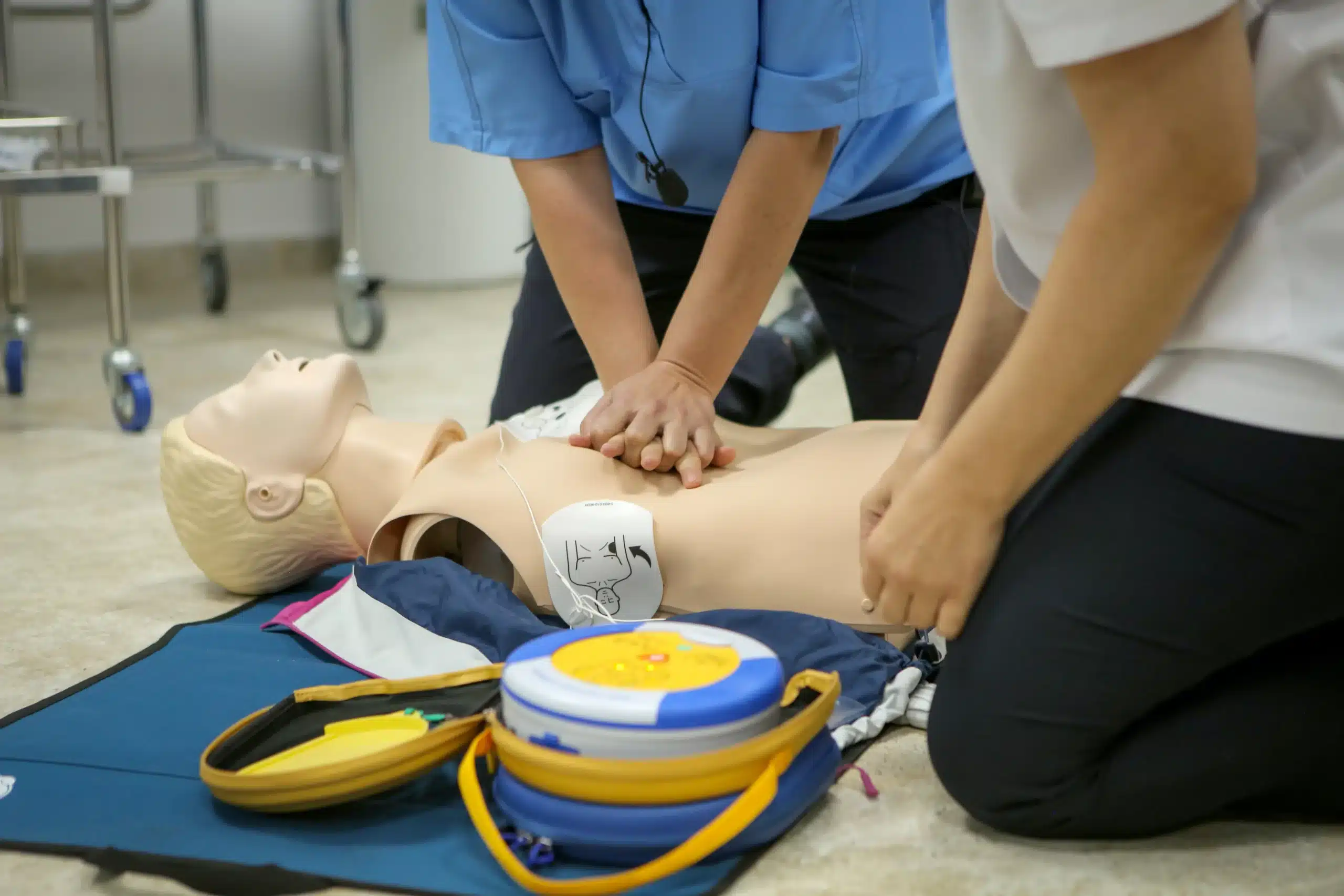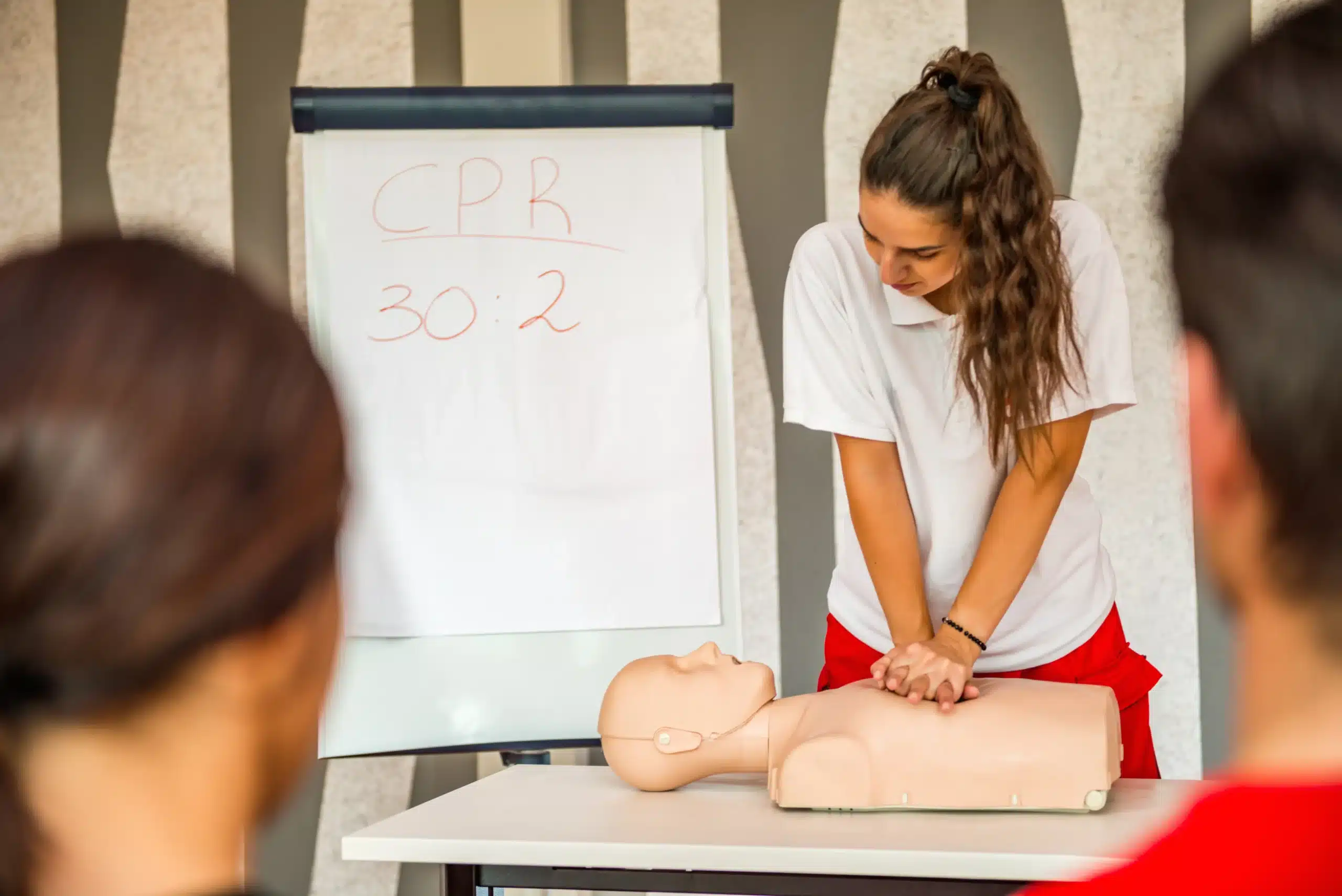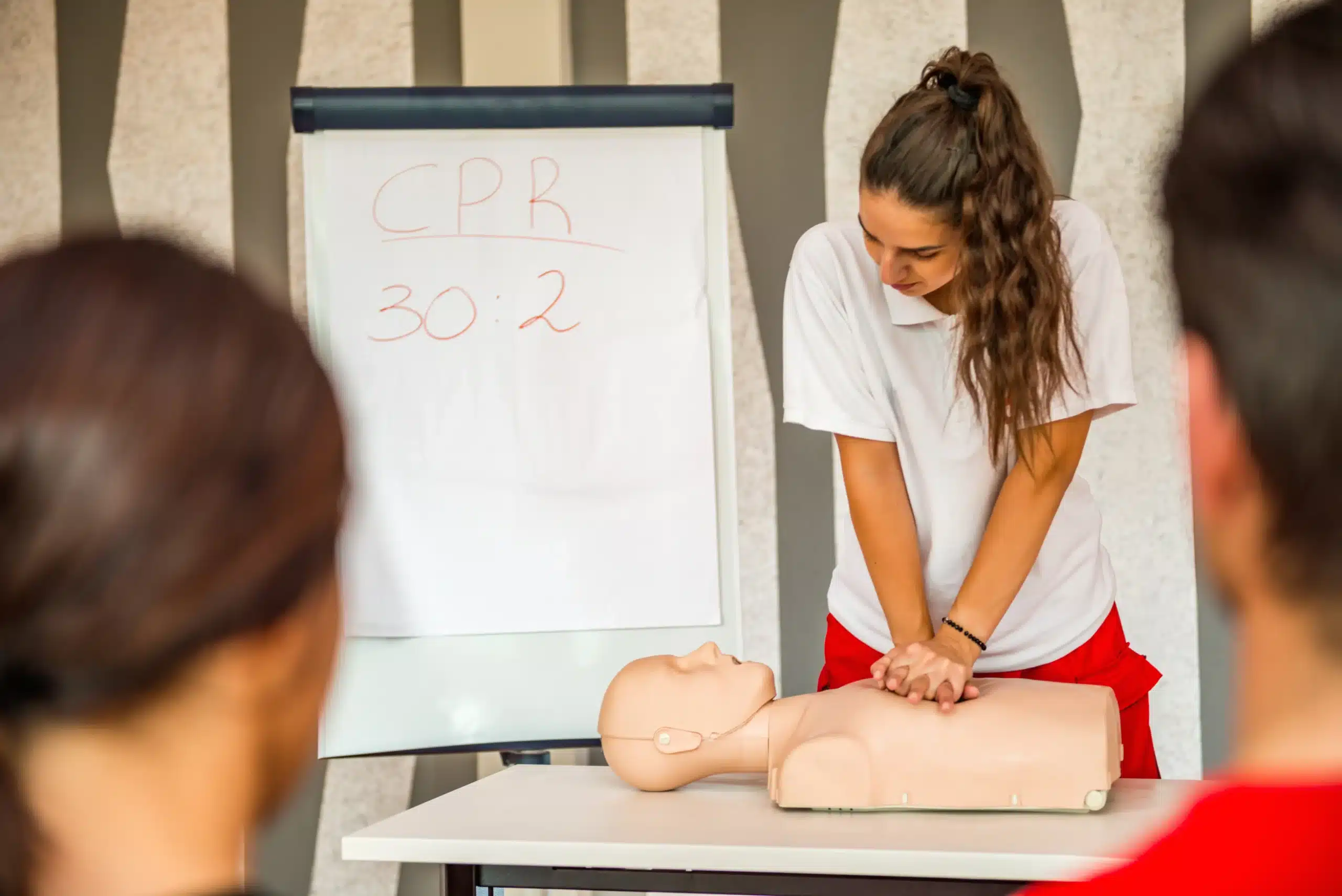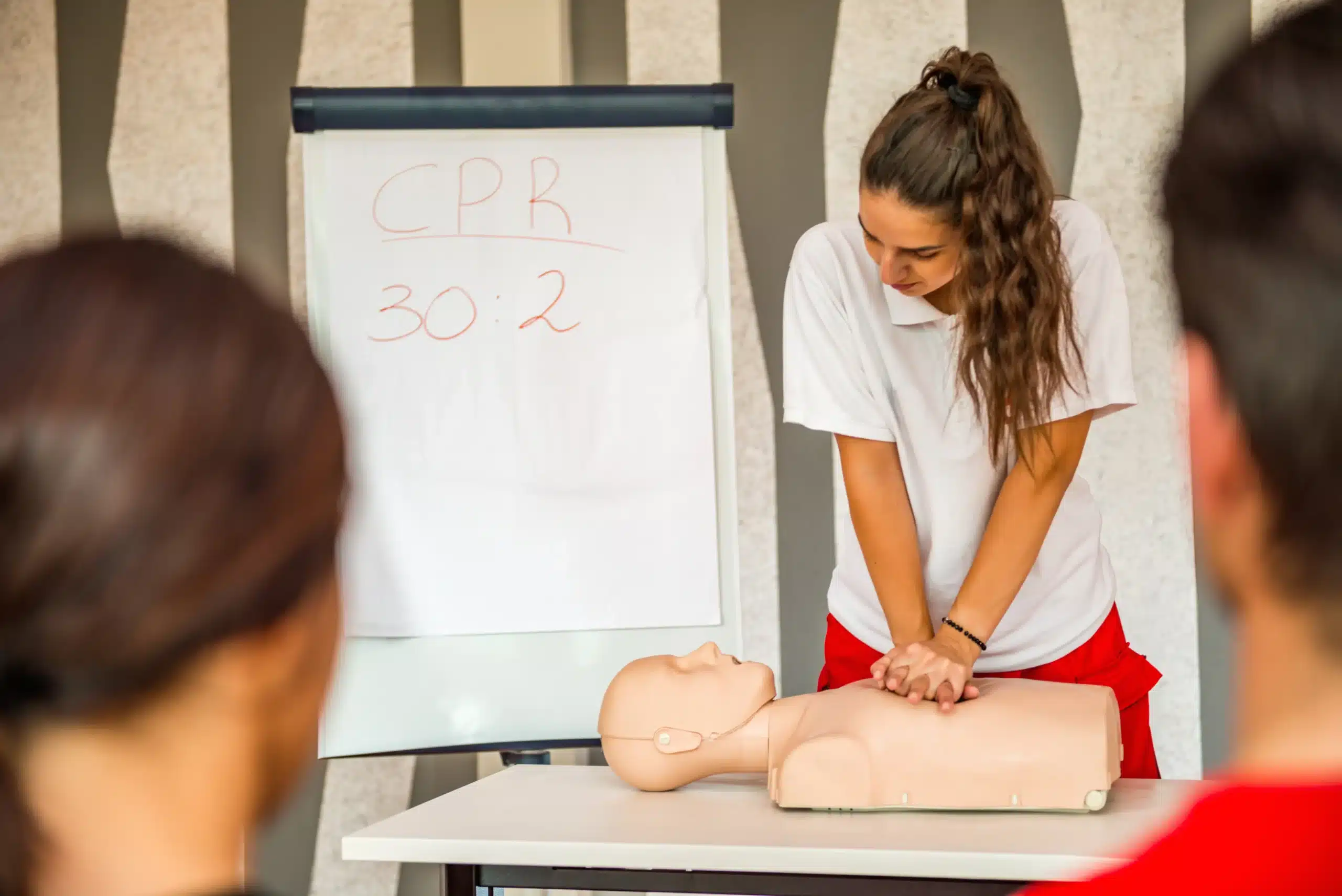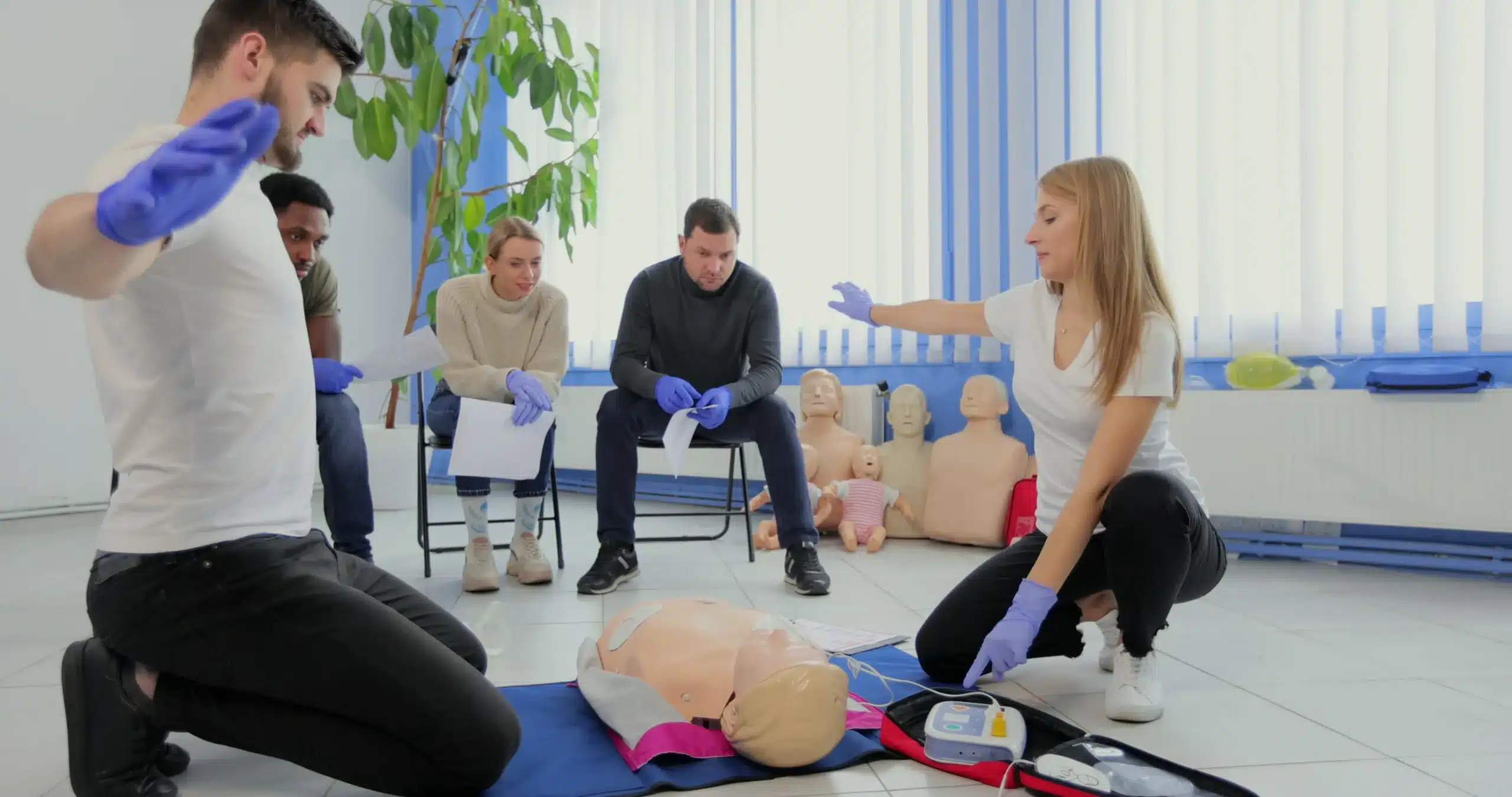Ready to step up your healthcare career and empower others with life-saving skills? Becoming an ACLS (Advanced Cardiovascular Life Support) instructor is a rewarding path, but it requires dedication and the right training. This comprehensive guide breaks down everything you need to know about how to become an ACLS instructor, from prerequisites and training costs to career opportunities and marketing strategies. We’ll cover the essential skills and qualities of a great instructor, the steps to maintain your certification, and resources to help you succeed. Whether you’re a seasoned healthcare professional or just starting your journey, this guide will provide valuable insights and actionable steps to help you become a confident and effective ACLS instructor.
Key Takeaways
- Becoming an ACLS instructor is a structured journey: You’ll need current ACLS provider certification, specialized instructor training, and hands-on teaching experience under supervision. This prepares you to confidently guide others in advanced cardiovascular life support.
- Maintaining your instructor status requires ongoing effort: Stay current with AHA guidelines, meet teaching requirements, and consider continuing education opportunities. This ensures your skills and knowledge remain sharp and up-to-date.
- Career options for ACLS instructors are diverse and flexible: Opportunities exist in hospitals, training centers, and independent practices, allowing you to find the right fit for your career goals. Whether you prefer a traditional setting or the autonomy of working for yourself, you can find a path that aligns with your interests.
What is an ACLS Instructor?
An ACLS (Advanced Cardiovascular Life Support) instructor is a licensed healthcare provider who trains other healthcare professionals in advanced life support techniques. These instructors are vital for preparing medical teams to handle cardiovascular emergencies. Their expertise gives healthcare providers the skills to manage cardiac arrest, stroke, and other critical situations, ultimately leading to better patient outcomes. ACLS instructors go beyond simply teaching the material; they make sure students become proficient in these life-saving skills. This often involves hands-on training, simulations, and assessments. They’re like the coaches preparing a team for a high-stakes game, providing the knowledge, practice, and confidence needed to perform under pressure. Becoming an ACLS instructor requires meeting specific prerequisites, completing specialized ACLS training, and demonstrating a deep understanding of both clinical skills and teaching methods. If you’re passionate about healthcare education and want to empower others with life-saving knowledge, becoming an ACLS instructor might be a good fit for you. At Concord CPR Classes, we offer comprehensive training to prepare you for this demanding but rewarding role. We also offer RQI classes for quick recertification for healthcare professionals.
ACLS Instructor Prerequisites
Becoming an ACLS Instructor involves certain prerequisites to ensure you have the necessary skills and knowledge. These requirements cover age, certifications, experience, and teaching abilities. Let’s break them down:
Age and Certification
First, you must be at least 18 years old. This is a standard requirement for most professional certifications. You’ll also need a current ACLS Provider certification from the American Heart Association. This foundational certification confirms your grasp of advanced cardiac life support principles and procedures, creating a solid base for teaching others. It’s the essential first step before guiding others on the same path.
Experience and Clinical Skills
Beyond the basics, aspiring ACLS Instructors need to demonstrate teaching competency and practical experience. This often involves teaching a certain number of courses and regularly updating your instructor status to stay current with the latest guidelines. Strong clinical skills are also crucial. Experience managing cardiovascular emergencies is essential for sharing real-world insights and best practices with your students. This combination of knowledge, experience, and teaching skills ensures you’re well-prepared to train future ACLS providers.
Become an ACLS Instructor: A Step-by-Step Guide
Becoming an ACLS instructor is a structured process designed to equip you with the necessary skills and knowledge. Here’s a step-by-step guide:
Complete the ACLS Instructor Essentials Course
Your first step is completing the online ACLS Instructor Essentials course. This self-paced course provides foundational knowledge in AHA materials, teaching methodologies, and effective instruction techniques, allowing you to learn and revisit materials as needed. This online component ensures you have a solid grasp of the core principles before moving on to practical training.
Participate in Hands-On Training
After the online essentials course, you’ll participate in hands-on instructor training led by a Training Center Faculty. This training focuses on practical application, including demonstrating skills, running simulations, and practicing effective teaching strategies. You’ll also learn about course management, student interaction, and creating a positive learning environment. This hands-on component is crucial for developing your confidence and competence as an instructor. As explained by Vitali Partners, this training includes Course Director Training and Monitoring.
Teach Under Supervision
The final step involves teaching your first ACLS course under the supervision of a Training Center Faculty member. This allows you to apply what you’ve learned in a real-world setting, with guidance and feedback. This monitored teaching experience is essential for refining your skills and ensuring you meet the AHA’s standards for instructor certification. You’ll receive constructive criticism and support to help you become a proficient and confident ACLS instructor. According to Vitali Partners, you must complete this monitored teaching experience within six months of completing the hands-on training. Successfully completing this step solidifies your qualifications as an AHA ACLS Instructor.
ACLS Instructor Training: Costs and Materials
So, you’re ready to invest in your future as a certified ACLS Instructor? Great! Let’s break down the costs and materials you’ll need.
Course Fees and Expenses
ACLS Instructor training costs vary depending on the training center and course format. Some providers offer blended learning (online modules combined with in-person skills sessions), while others are entirely in-person. Expect to pay around $40 for the online portion of the ACLS Instructor Essentials course from the American Heart Association. A comprehensive program, like the ACLS Instructor Essentials Course from Superior Life Support, can cost around $600. This often includes the online course, classroom instruction, mentorship, and a two-year AHA Instructor certification (after successful monitoring). Remember, the online portion usually requires a separate in-person skills session at an AHA Training Center for your completion card—an additional cost. Factor in potential travel expenses if the training center isn’t local. Check with your chosen provider for their latest pricing.
Essential Resources and Equipment
Beyond course fees, you’ll need essential resources and equipment. The ACLS Instructor Manual (eBook or print) and ACLS Course Videos (USB, DVD, or streaming) are key. You’ll also provide ACLS Student Manuals for each student. For hands-on training, you’ll need BLS equipment, an airway trainer head, a laryngoscope set, an airway management kit, a training cardiac monitor, a Dart Sim ACLS bag, IO training supplies, pharmaceutical props, and other clinical props. The AHA ACLS Instructor Manual details all required equipment. Maintaining your instructor status may also mean investing in updated materials and equipment as guidelines change. It’s an upfront investment, but these resources are crucial for high-quality ACLS training. Consider it an investment in your students’ success and your professional development.
Skills and Qualities of a Great ACLS Instructor
Becoming a successful ACLS instructor involves more than just technical expertise. It requires a blend of soft skills and a genuine passion for teaching. Here’s a closer look at the key qualities that distinguish exceptional ACLS instructors:
Effective Communication and Presentation
Clear communication is paramount when conveying complex medical information. A great ACLS instructor can break down intricate concepts into digestible parts, using relatable examples and avoiding medical jargon. They present information in a structured, organized manner, ensuring students grasp the core principles of ACLS. Participants in the AHA ACLS Instructor Course receive training on teaching methods and facilitating engaging learning experiences. This focus on communication ensures instructors can effectively convey life-saving information. Beyond lecturing, they encourage active participation, ask thought-provoking questions, and foster a supportive learning environment where students feel comfortable asking questions.
Clinical Knowledge and Adaptability
A strong clinical foundation is essential for any ACLS instructor. They must possess in-depth knowledge of cardiovascular emergencies, pharmacology, and current ACLS guidelines. This expertise allows them to answer student questions accurately and confidently, provide real-world context to scenarios, and adapt their teaching to different learning styles. Becoming an ACLS instructor takes preparation and commitment: Prerequisites include holding a current ACLS Provider certification and affiliating with an approved training center. This ensures instructors have practical experience and up-to-date knowledge. Furthermore, a great instructor stays updated with the latest advancements in ACLS protocols and incorporates them into their teaching.
Problem-Solving and Student Engagement
ACLS scenarios often demand quick thinking and decisive action. A skilled ACLS instructor cultivates these problem-solving abilities in their students. They present realistic scenarios, encourage critical thinking, and guide students through the decision-making process in a high-pressure environment. Simulation-based training with constructivist teaching strategies, which encourage students to discover their learning issues and solve problems collaboratively, can enhance engagement and learning outcomes. An engaging instructor keeps students motivated and invested in their learning. They create a dynamic learning environment through interactive exercises, simulations, and group discussions, ensuring students not only learn the material but also retain it and can apply it effectively in real-life situations.
Maintain Your ACLS Instructor Certification
Once you’ve earned your ACLS Instructor certification, the journey doesn’t end there. Maintaining your credentials requires ongoing effort and a commitment to staying current with advancements in advanced cardiac life support. Here’s what you need to know to keep your certification active and your skills sharp.
Teaching Requirements and Recertification
Active instruction is key to maintaining your ACLS Instructor status. The American Heart Association (AHA) requires instructors to teach a minimum number of ACLS courses within a specified timeframe. You’ll also need to be monitored teaching one of those courses to ensure you’re upholding the AHA’s standards. Check with your Training Center for the most up-to-date recertification requirements. These requirements help ensure you’re consistently applying your skills and staying familiar with the latest guidelines.
Stay Updated with Guidelines
ACLS guidelines are periodically updated to reflect the latest scientific evidence and best practices. As an instructor, it’s crucial to stay informed about these changes. This might involve participating in instructor updates, attending conferences, or reviewing updated course materials. Staying current ensures you’re providing students with the most effective information.
Continuing Education and Professional Development
Beyond meeting the minimum teaching requirements, consider engaging in continuing education. This could include advanced workshops, specialized training, or pursuing further certifications related to emergency cardiovascular care. These activities enhance your teaching skills and demonstrate your commitment to professional growth. Staying active in the ACLS community through conferences and workshops can also provide valuable networking opportunities.
ACLS Instructor Career Opportunities
Becoming an ACLS instructor opens doors to diverse career paths, allowing you to share your expertise and contribute to the medical community. Whether you prefer a traditional healthcare setting, the flexibility of independent instruction, or a blend of both, there are options to suit your interests and goals. This section explores some of the career opportunities available to ACLS instructors.
Healthcare Facilities and Training Centers
Many ACLS instructors find fulfilling roles within hospitals, clinics, and dedicated training centers. These settings offer the chance to educate other healthcare providers—including nurses, paramedics, and physicians—on managing life-threatening cardiovascular emergencies. As an instructor in a healthcare facility, you’ll play a crucial role in ensuring your colleagues possess the skills and knowledge to deliver timely, effective care. Becoming an ACLS instructor equips you to train other healthcare providers, expanding your influence beyond direct patient care, as discussed in Concord CPR Classes’ guide to ACLS Instructor Certification.
Independent Instruction and Entrepreneurship
If you value flexibility and autonomy, independent instruction might be the perfect fit. Many instructors take on freelance work, offering ACLS training to businesses, schools, and community groups. This path allows you to set your own schedule, choose your clients, and build a personalized brand. You could also partner with organizations or businesses to provide on-site training, tailoring your instruction to their specific needs. The National CPR Center offers helpful strategies for CPR instructors to increase their earnings, which can be adapted for ACLS instructors. Building a successful independent practice requires marketing savvy and strong organizational skills, but the rewards can be significant.
Balance Teaching with Clinical Practice
One of the advantages of becoming an ACLS instructor is the ability to balance teaching with your existing clinical practice. Many healthcare professionals choose to integrate instruction into their careers, enriching their skill set and sharing their knowledge. This balance can be particularly rewarding, allowing you to stay engaged with both direct patient care and the education of future healthcare providers. Maintaining your ACLS Instructor certification requires staying active in teaching and keeping your knowledge current, as highlighted in the ACLS Instructor Certification guide. This ongoing engagement benefits both your teaching abilities and your clinical practice, ensuring you remain at the forefront of advanced cardiovascular life support.
Find ACLS Instructor Training
Finding the right ACLS instructor training program is crucial for your journey toward becoming a certified instructor. Here’s a breakdown of where to look and what to expect:
AHA Training Centers
AHA Training Centers are your primary resource for ACLS Instructor courses. These centers adhere to the AHA’s rigorous standards and offer the official training curriculum. Connecting with a Training Center willing to mentor you through the process—from initial training to supervised teaching—is essential. Many Training Centers offer additional
Hospitals and Medical Centers
Many hospitals and medical centers provide ACLS instructor courses as part of their professional development programs. These institutions often partner with AHA Training Centers, offering convenient access to high-quality instruction. Check with your employer or local hospitals to explore available programs. This option can be particularly advantageous for healthcare professionals seeking career advancement within their current workplace.
Online Resources and Platforms
The AHA offers an online component, the ACLS Instructor Essentials course, as part of a blended learning approach. This means you’ll need to complete the online portion and then attend a hands-on session at an AHA Training Center for full certification. This hybrid model offers flexibility while ensuring you receive the practical training necessary to become an effective ACLS instructor. The online portion covers essential topics and allows you to learn at your own pace.
Market Your ACLS Instructor Services
Once you’re a certified ACLS Instructor, you’ll want to spread the word. Here’s how to effectively market your services:
Build a Professional Network
Referrals are incredibly valuable, especially when starting out. Prioritize providing excellent instruction and support. Satisfied students and colleagues are more likely to recommend your services. Networking with healthcare professionals, attending industry events, and joining relevant professional organizations can expand your reach and create new opportunities. Building these connections within your professional circle often leads to more referrals and collaborations, increasing your visibility as an ACLS instructor.
Digital Marketing and Online Presence
A strong online presence is essential for attracting students. A well-designed website optimized for local SEO helps potential students find your courses when searching online for “ACLS classes near me”. Use email marketing to stay in touch with past students and announce upcoming classes. Social media platforms can also be powerful tools for engaging with potential students and sharing valuable content related to ACLS. Consider creating short videos demonstrating key ACLS skills or sharing informative articles about the importance of ACLS certification. All of these digital marketing strategies are crucial for a thriving ACLS course.
Offer Specialized Courses and Workshops
Think beyond basic ACLS certification. Offering specialized courses or workshops can attract a wider audience and position you as an expert in specific areas. For example, you could develop a workshop focused on ACLS in pediatric emergencies or tailor a course specifically for emergency response teams. This targeted approach diversifies your offerings and allows you to reach niche markets, potentially allowing you to charge higher fees. Combining established marketing techniques with fresh strategies will set you apart. Partnering with local businesses or healthcare organizations to offer on-site training expands your reach and makes your courses more accessible. This can be especially appealing to busy professionals who may find it difficult to attend classes at a fixed location.
Top ACLS Instructor Training Providers
Finding the right ACLS instructor training program is crucial for your success. Several reputable organizations offer high-quality courses. Here are a few leading providers to consider:
American Heart Association (AHA)
The American Heart Association offers a comprehensive ACLS Instructor course that prepares candidates to teach Advanced Cardiac Life Support effectively. The program involves meeting specific requirements, completing training, and monitored teaching experience. AHA certification is widely recognized and respected in the healthcare field.
Red Cross
The American Red Cross also provides ACLS Instructor certification. This certification offers reciprocity with the American Heart Association, a significant advantage allowing instructors to teach courses from both organizations, expanding their reach and potential student base.
National Health Care Provider Solutions (NHCPS)
National Health Care Provider Solutions offers comprehensive ACLS instructor training designed to meet the needs of healthcare professionals. Their program focuses on equipping instructors with the skills and knowledge to teach ACLS courses effectively.
ProMed Certifications
ProMed Certifications provides ACLS instructor courses that focus on practical skills and knowledge, equipping candidates with everything they need to confidently teach ACLS.
HealthStream
HealthStream offers a variety of training solutions, including ACLS instructor courses tailored for healthcare professionals. Their programs are designed to enhance teaching capabilities and provide a strong foundation for aspiring instructors.
Concord CPR Classes
Concord CPR Classes provides ACLS instructor training that includes online essentials, hands-on training, and a monitored teaching component. This blended approach ensures instructors are well-prepared to teach ACLS effectively. They serve the Concord, Walnut Creek, and Pleasant Hill areas.
Related Articles
- ACLS Instructor Certification: A Complete Guide – Concord CPR Classes
- ACLS Instructor Class: Your Complete Guide – Concord CPR Classes
- ACLS Certification in Concord: Your Complete Guide – Concord CPR Classes
- ACLS Renewal in Concord: Your Complete Guide – Concord CPR Classes
Frequently Asked Questions
What are the career prospects like for ACLS instructors?
You can work in various settings, from hospitals and clinics to independent training centers. Some instructors combine teaching with their clinical practice, while others focus solely on instruction. There’s also the option of building your own business by offering freelance ACLS training.
How much does it cost to become an ACLS instructor?
The cost varies depending on the training center and whether you choose a blended learning format or an entirely in-person course. The online portion of the AHA ACLS Instructor Essentials course is around $40, while a full program can range from $500 to over $1000. Don’t forget to factor in potential travel expenses and the cost of materials like manuals and equipment.
What’s the difference between ACLS provider and ACLS instructor certification?
ACLS provider certification focuses on managing cardiovascular emergencies as a healthcare professional. Instructor certification takes it a step further, equipping you to teach these life-saving skills to others. You’ll need to be a certified ACLS provider before you can become an instructor.
How can I market my ACLS instructor services?
Networking with healthcare professionals, building a strong online presence, and offering specialized courses are all effective strategies. Word-of-mouth referrals are also incredibly valuable, so focus on providing excellent instruction and support to your students.
What are the ongoing requirements to maintain my ACLS instructor certification?
You’ll need to teach a minimum number of ACLS courses within a specific timeframe and undergo monitoring while teaching to ensure you’re meeting the AHA’s standards. Staying updated with the latest ACLS guidelines through continuing education is also essential.


